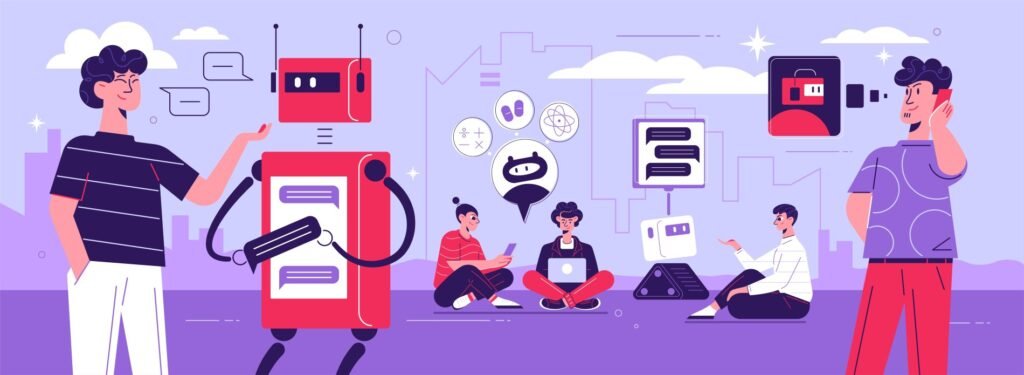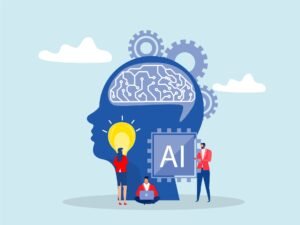Triage AI Agents: Key Takeaways
- What They Are: Triage AI Agents are AI systems that automate sorting and prioritizing tasks or cases based on urgency, mimicking human triage processes like those in hospital emergency rooms.
- How They Work: They use three components—Intake, Assessment, and Routing Agents—to collect information, evaluate priorities, and direct cases to the right solutions.
- Key Benefits: They offer speed, consistency, and scalability, making them ideal for industries like healthcare, customer service, and IT support.
- Applications: Used in healthcare for patient prioritization, customer service for issue resolution, and cybersecurity for threat assessment.
- Challenges: Accuracy, ethical concerns, and integration with existing systems need careful consideration.
Imagine walking into a busy hospital emergency room (ER). You’re in pain, and a nurse quickly approaches, asking questions like, “Where does it hurt?” or “When did this start?” Based on your answers, she determines whether you need immediate attention or can wait. If you show her a minor paper cut, she might hand you a bandage and send you home. But if you’ve had a serious accident, she ensures you see a doctor right away. This process, called triage, is about sorting and prioritizing based on urgency and need.
Now, picture this process happening automatically, powered by artificial intelligence (AI). That’s what Triage AI Agents do. These smart systems mimic human triage by collecting information, assessing priorities, and directing cases to the right solutions—all without human intervention. In this article, we’ll explore what Triage AI Agents are, how they work, their benefits, and their applications in simple terms, using analogies, examples, and a touch of technical insight for those curious about the behind-the-scenes magic.
On This Page
Table of Contents
1. Introduction to Triage
What Is Triage?
Triage comes from the French word “trier,” meaning “to sort” or “to pick.” It’s a method used to prioritize tasks, cases, or people when resources are limited. The concept became formalized during the Napoleonic Wars in the early 1800s, when surgeon Dominique Jean Larrey prioritized treating wounded soldiers based on the severity of their injuries, not their rank. This approach saved lives by ensuring critical cases got care first.
Today, triage is used in many fields:
- Healthcare: Sorting patients in an ER based on how urgent their condition is.
- Customer Service: Handling urgent customer complaints before routine inquiries.
- IT Support: Addressing critical system outages before minor technical issues.
- Cybersecurity: Prioritizing high-risk threats over low-risk alerts.
The Rise of Triage AI Agents
With the advent of AI, the triage process can now be automated. Triage AI Agents are AI systems that replicate human triage by using large language models (LLMs) and multi-agent systems to collect data, evaluate it, and decide what to do next. These agents are like digital triage nurses, working tirelessly to ensure that the most urgent cases are handled first, bringing speed, consistency, and scalability to the process.
2. Understanding Triage AI Agents
Definition and Purpose
A Triage AI Agent is an AI system designed to automate the sorting and prioritization of tasks or cases based on their urgency and importance. It’s like having a team of virtual assistants who can quickly gather information, analyze it, and decide where it should go next. The primary goals are to:
- Collect initial information efficiently.
- Assess the severity or priority of the case.
- Route the case to the appropriate person, team, or automated solution.
These agents are particularly valuable in high-pressure environments where quick and accurate decisions are crucial, such as hospitals, call centers, or IT helpdesks.
How They Differ from Chatbots
You might wonder how Triage AI Agents differ from chatbots or conversational AI. While both use AI to interact with users, their purposes and capabilities are distinct:
- Primary Function: Chatbots focus on answering questions or providing information, often following scripted responses. Triage AI Agents prioritize and manage workflows, making complex decisions about what to do next.
- Workflow: Chatbots typically handle single interactions or predefined conversation flows. Triage AI Agents follow a structured process involving intake, assessment, and routing.
- Adaptability: Chatbots, especially rule-based ones, have limited adaptability. Triage AI Agents can learn from new data and improve their decision-making over time.
- Decision-Making: Chatbots make simple decisions based on user inputs. Triage AI Agents analyze multiple factors, such as urgency and resource availability, to make informed decisions.
- Use Cases: Chatbots are great for general customer support or FAQs. Triage AI Agents excel in scenarios requiring prioritization, like emergency services or high-volume support systems.
3. Components of a Triage AI Agent
A Triage AI Agent is made up of three key components, each with a specific role, working together like a relay team passing a baton. Here’s a breakdown:
1. Intake Agent
- Function: The Intake Agent is the first point of contact, collecting initial information from users or systems. It’s like the nurse at the ER front desk asking for your basic details and symptoms.
- How It Works: It uses large language models (LLMs) to understand natural language inputs, engaging in conversations or processing forms. It connects to knowledge sources like databases, ticket systems, or questionnaire templates to gather relevant data.
- Example: In a customer support scenario, the Intake Agent might ask, “What’s the issue you’re facing?” and collect details like the customer’s name, account number, and a brief description of the problem.
2. Assessment Agent
- Function: The Assessment Agent analyzes the collected data to diagnose the problem and assign a priority level (e.g., high, medium, low). It’s like the nurse evaluating your symptoms to determine how urgent your case is.
- How It Works: It uses LLMs for analysis and connects to domain-specific knowledge sources, search APIs, or web search engines to gather additional context. It then generates a detailed needs assessment and priority.
- Example: If a customer reports an internet outage, the Assessment Agent might check for known outages in the area, analyze the description, and determine if the issue is critical (e.g., a widespread outage) or minor (e.g., a local problem).
3. Routing Agent
- Function: The Routing Agent decides the next course of action based on the assessment. It might route the case to a human agent, schedule it for later, or resolve it automatically.
- How It Works: It uses LLMs for decision-making and interfaces with APIs for communication (e.g., email, SMS) or case management systems. It also manages the priority of all cases to ensure the most urgent ones are handled first.
- Example: For a critical internet outage, the Routing Agent might escalate the case to a senior technician. For a minor issue, it might provide an automated solution or direct the customer to a self-service portal.
Table: Components of a Triage AI Agent
| Component | Function | Technology |
|---|---|---|
| Intake Agent | Collects initial information from the user or system | Uses LLMs to process natural language, connected to knowledge sources like databases and questionnaires |
| Assessment Agent | Analyzes the collected data to diagnose the problem and assign priority | Uses LLMs for analysis, connects to search APIs and domain-specific knowledge sources |
| Routing Agent | Decides the next action based on the assessment, routes the case accordingly | Uses LLMs for decision-making, interfaces with APIs for communication and case management |
4. How Triage AI Agents Work
The workflow of a Triage AI Agent can be broken down into three main steps, each handled by one of the components above:
- Intake: The Intake Agent collects initial information through a chat interface, form, or automated alert. For example, in a hospital setting, it might ask a patient to describe their symptoms.
- Assessment: The Assessment Agent analyzes the data, consulting knowledge sources if needed, and assigns a priority level. For instance, it might determine that chest pain is high priority while a minor cold is low priority.
- Routing: The Routing Agent decides the next action, such as routing the case to a doctor, scheduling it for later, or providing an automated response. It also monitors all cases to adjust priorities as new information comes in.
Real-World Analogy: The ER Nurse
Think of a Triage AI Agent as a team of nurses in an ER:
- The Intake Agent is the nurse at the front desk, filling out your intake form.
- The Assessment Agent evaluates your symptoms to decide how urgent your case is.
- The Routing Agent is the nurse who directs you to the right department or provides immediate care.
Example Scenario: Customer Support
Here’s how a Triage AI Agent might work in a customer support setting:
- Intake: A customer reports an internet issue via a chat interface. The Intake Agent collects their account number and problem description.
- Assessment: The Assessment Agent checks for known outages and analyzes the issue, assigning a medium priority for a localized problem.
- Routing: The Routing Agent assigns the case to a regional support team and notifies the customer of the estimated resolution time.
5. Benefits of Triage AI Agents
Triage AI Agents offer several advantages over traditional human-led triage:
- Speed: They process cases much faster than humans, handling multiple cases simultaneously.
- Consistency: AI follows standardized rules, reducing human bias and variability.
- Scalability: They can handle thousands of cases without additional resources.
- Cost-Efficiency: Automation reduces the need for human agents in initial stages.
- 24/7 Availability: AI agents work around the clock, ensuring constant service.
- Improved Accuracy: With access to vast data and learning capabilities, they improve over time.
6. Real-World Applications
Triage AI Agents are transforming various industries:
- Healthcare: Automating patient triage in hospitals or telemedicine platforms, prioritizing critical cases like heart attacks over minor issues like colds.
- Customer Service: Sorting customer inquiries, ensuring urgent issues (e.g., billing errors) are handled before routine questions.
- IT Support: Prioritizing technical issues, such as system outages, over minor problems like password resets.
- Cybersecurity: Classifying threats, prioritizing high-risk issues like ransomware over low-risk alerts like phishing emails.
- Insurance: Assessing claims to prioritize urgent cases, such as medical emergencies, over routine claims.
Table: Applications of Triage AI Agents
| Industry | Application | Example |
|---|---|---|
| Healthcare | Prioritizing patients based on symptom severity | Chest pain patients are seen before those with minor injuries |
| Customer Service | Sorting inquiries by urgency | Urgent billing issues are escalated; FAQs are handled automatically |
| IT Support | Prioritizing technical issues by impact | System outages are addressed before password reset requests |
| Cybersecurity | Classifying threats by risk level | Ransomware threats are prioritized over phishing alerts |
| Insurance | Assessing claims for urgency | Medical emergency claims are processed before routine property claims |
7. Technical Implementation
Building a Triage AI Agent involves several technologies:
- Large Language Models (LLMs): Such as GPT or BERT, for understanding and processing natural language.
- Multi-Agent Systems: Frameworks like Langchain or Crew AI to manage interactions between Intake, Assessment, and Routing Agents.
- Knowledge Sources: Databases, APIs, and search engines provide context for decision-making.
- Integration: Connecting with existing systems like CRM software or hospital information systems.
Example: Building a Triage AI Agent with Langchain
Here’s a high-level overview of how to structure a Triage AI Agent using Langchain:
- Intake Agent: Uses a conversational chain to collect user input via chat or forms.
- Assessment Agent: Uses a retrieval chain to analyze data against a knowledge base.
- Routing Agent: Uses a decision chain to route cases based on priority.
- Workflow: Langchain orchestrates the interaction between agents, ensuring seamless data flow.
8. Challenges and Considerations
While Triage AI Agents are powerful, they come with challenges:
- Accuracy: Incorrect assessments could have serious consequences, especially in healthcare.
- Ethical Concerns: Who is responsible if an AI makes a wrong decision in a critical situation?
- Integration: Connecting AI with legacy systems can be complex and costly.
- Data Privacy: Handling sensitive data requires robust security measures.
- User Trust: Building confidence in AI decisions requires transparency and clear communication.
9. Future of Triage AI Agents
As AI technology advances, Triage AI Agents will become even more capable:
- Improved LLMs: Better understanding of context and nuances for more accurate assessments.
- Multi-Modal Inputs: Handling text, images, and voice for comprehensive analysis.
- Seamless Integration: Becoming a core part of digital workflows across industries.
- Human-AI Collaboration: Working alongside humans to handle complex tasks while automating routine ones.
10. WrapUP
Triage AI Agents are revolutionizing how we prioritize and manage tasks in high-pressure environments. By automating the intake, assessment, and routing processes, they bring speed, consistency, and scalability to industries like healthcare, customer service, and IT support. While challenges like accuracy and ethics remain, the potential to transform workflows is immense.
For developers and data scientists, exploring frameworks like Langchain or Crew AI is a great way to dive into this exciting field. As AI continues to evolve, Triage AI Agents will play a growing role in our digital world, making processes more efficient and effective.

FAQs
What is a Triage AI Agent?
A Triage AI Agent is like a super-smart assistant that sorts and prioritizes tasks or problems based on how urgent they are. Imagine a nurse in a hospital deciding which patients need help first—that’s what a Triage AI Agent does, but for things like customer complaints, IT issues, or even medical cases, all automatically using artificial intelligence (AI).
How does a Triage AI Agent work?
It works in three simple steps:
Step 1: Collect Information – The AI asks questions or gathers data, like a customer describing a problem or a patient listing symptoms.
Step 2: Figure Out What’s Important – It analyzes the information to decide how urgent the issue is (e.g., “Is this a big deal or a small one?”).
Step 3: Send It to the Right Place – It decides who or what should handle the issue, like passing it to a human expert or solving it automatically.
Think of it as a team of digital helpers passing the problem along like a relay race, each with a specific job.
How is a Triage AI Agent different from a chatbot?
A chatbot is like a friendly robot that answers your questions or follows a script, like when you ask about store hours. A Triage AI Agent is smarter—it doesn’t just chat; it makes decisions about what to do with your problem. It’s like the difference between a receptionist who answers the phone and a manager who decides what to do about a customer complaint.
Where are Triage AI Agents used?
They’re used in lots of places, such as:
Hospitals: Deciding which patients need a doctor right away.
Customer Service: Sorting complaints so urgent ones (like a wrong order) get fixed first.
IT Helpdesks: Handling critical tech issues (like a server crash) before minor ones (like a password reset).
Cybersecurity: Spotting serious threats like hacking attempts before less risky alerts.
Insurance: Prioritizing urgent claims, like medical emergencies, over routine ones.
What are the benefits of using Triage AI Agents?
They make things easier in several ways:
Fast: They handle tasks quickly, even when there’s a lot going on.
Fair: They follow the same rules every time, so no one gets overlooked.
Available 24/7: They work all day and night without needing a break.
Cost-Saving: They reduce the need for humans to do repetitive sorting tasks.
Scalable: They can handle thousands of cases at once, no matter how busy it gets.
Can Triage AI Agents make mistakes?
Yes, they’re not perfect. If the AI gets bad or incomplete information, it might make the wrong call, like prioritizing a minor issue over a major one. That’s why it’s important to have humans double-check important decisions, especially in places like hospitals where mistakes can be serious.
What kind of technology powers Triage AI Agents?
They use a few cool tech tools:
AI Language Models: These help the AI understand and respond to human language, like when you describe a problem.
Databases: They pull information from places like customer records or medical histories.
APIs: These let the AI connect to other systems, like email or ticketing software.
Multi-Agent Systems: These are like a team of AI mini-programs working together to handle different parts of the triage process.
Can anyone use Triage AI Agents?
Yes, but it depends on the context:
Businesses: Companies use them to manage customer support, IT issues, or claims.
Developers: Tech folks can build or customize them using open-source tools.
Individuals: You might interact with them indirectly, like when you call a support line and an AI sorts your issue before a human steps in.
If you’re a developer, you can start experimenting with frameworks like Langchain to build your own Triage AI Agent.
Are there any risks with Triage AI Agents?
There are a few things to watch out for:
Wrong Decisions: If the AI misjudges a situation, it could cause delays or errors.
Privacy: They handle sensitive data, like medical records, so security is a big deal.
Trust: Some people might not trust an AI to make important decisions, so clear communication is key.
Setup Costs: Building and integrating them can be expensive and complex.




